Pruning olive trees: expert tips for keeping them in top condition
We explain all there is to know about pruning olive trees – whether growing them in a pot or in the ground
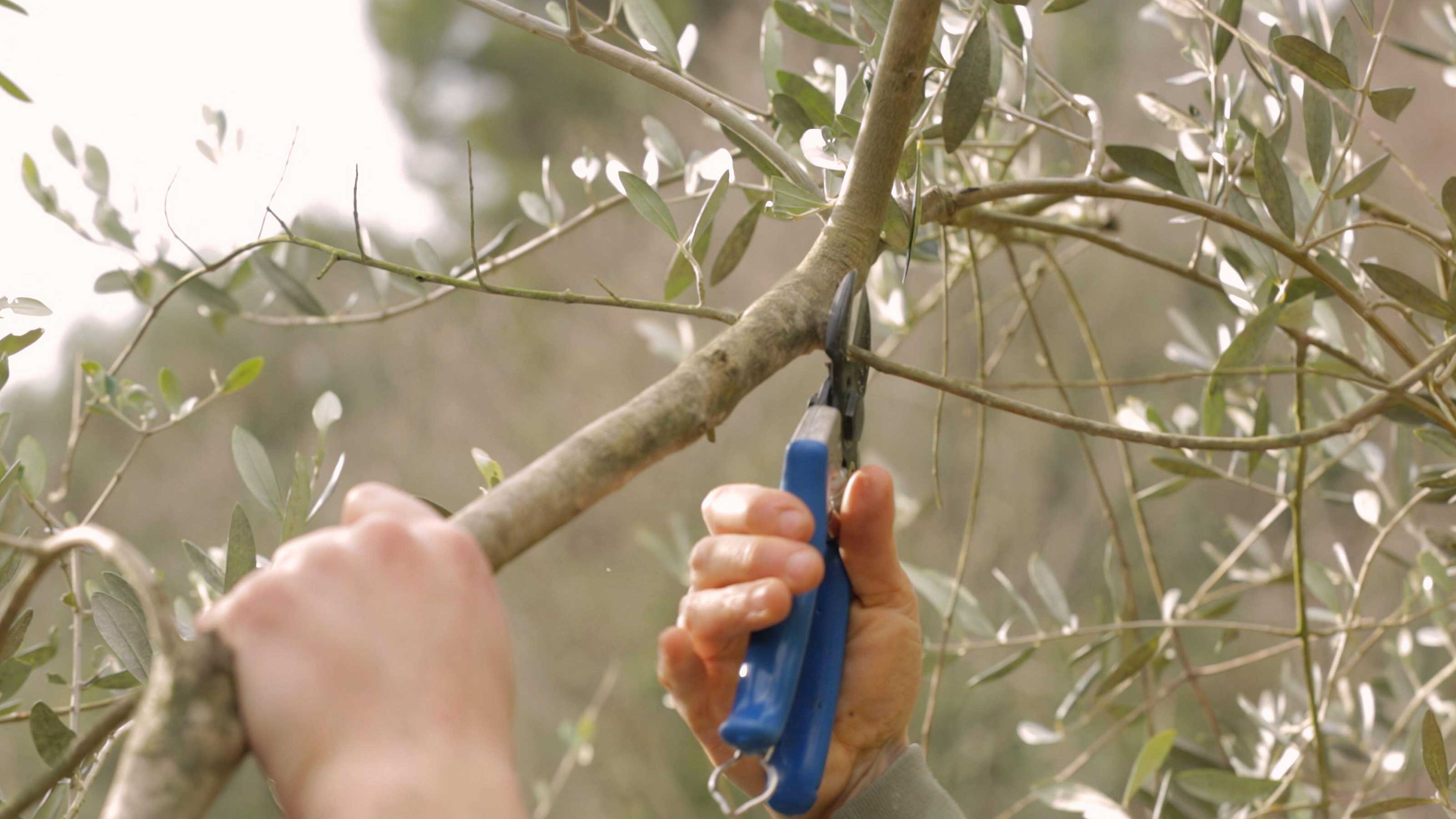

Pruning olive trees will keep them looking their best, and it's really easy to do.
Naturally, they're a favorite for Mediterranean planting schemes, and look particularly striking in a large terracotta pot. They're easily one of the best trees for small gardens, with their silvery leaves, elegant structure, and tolerance to drought.
If you have one, at some stage, you'll probably wonder when and how to give it a trim. Once you've got the right tools at the ready, it couldn't be simpler.
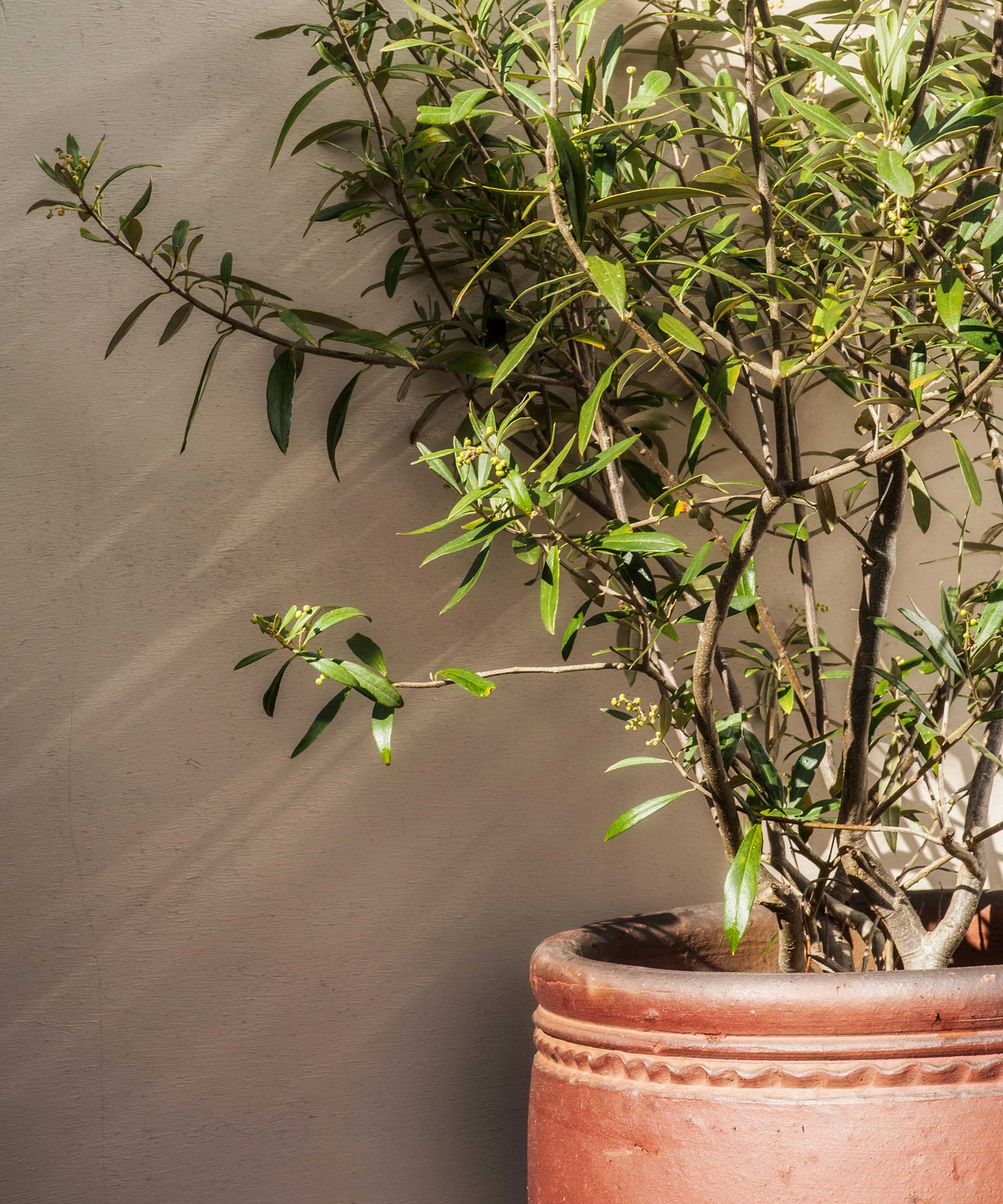
Once your olive has established itself over a couple of years, give it an annual prune
Pruning olive trees in 5 easy steps
Follow these steps on how to prune olive trees to keep them happy, healthy, and looking great.
- Start by gathering your tools. For smaller trees, a pair of bypass secateurs or pruning shears may be all you need, but for more mature trees, you may want to invest in a hand saw or loppers. Make sure you clean your pruning shears or other cutting tools and ensure they are sharp before you begin, to prevent damaging the plant or spreading any lingering diseases or pests.
- Shorten any dead, diseased, or dying shoots, cutting them at a slant right back to live, healthy growth.
- Then, you can work on cutting back weaker, thinner branches to open up the structure at the center of the tree. This will allow it to get more sunlight and ensure a brisk flow of air, explains John Negus, a gardening expert from Amateur Gardening magazine. 'Provided you remove only a small amount of growth – no more than 9in (23cm) – from the central leader and other stems, it won't trigger what are called "water shoots",' adds John. These appear from drastically pruned stems and have no value to the tree.
- Speaking of, remove any existing water shoots you spot, as well as any suckers on the trunk below the main fork of the tree.
- If you want to restrict the size of your olive tree, which is common if using them for container gardening, the RHS says to tip prune the main branches. Simply cut them back to a strong replacement shoot.
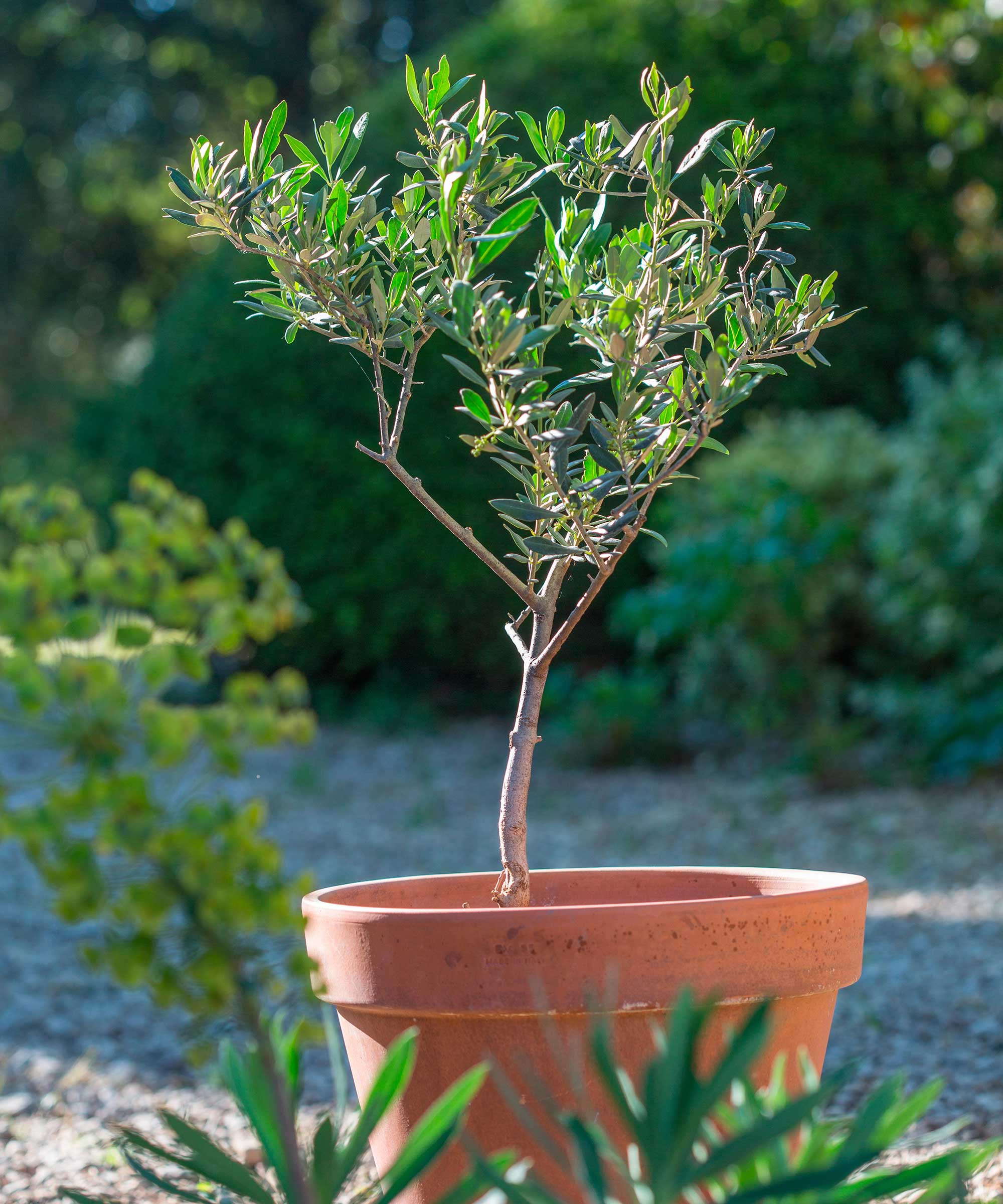
Olive trees are popular for growing in pots
When is the best time for pruning olive trees?
The best time to prune olive trees is between mid-spring and early summer, advises John Negus. Olives are more susceptible to frost damage if you prune them during colder temperatures, so it's much better to wait until the weather is warmer. Avoid pruning if rain is forecasted, too, as doing so in wet conditions makes them more vulnerable to disease.
It's also wise to wait until your olive is at least two years old to start pruning it. After that, an annual trim will be beneficial.
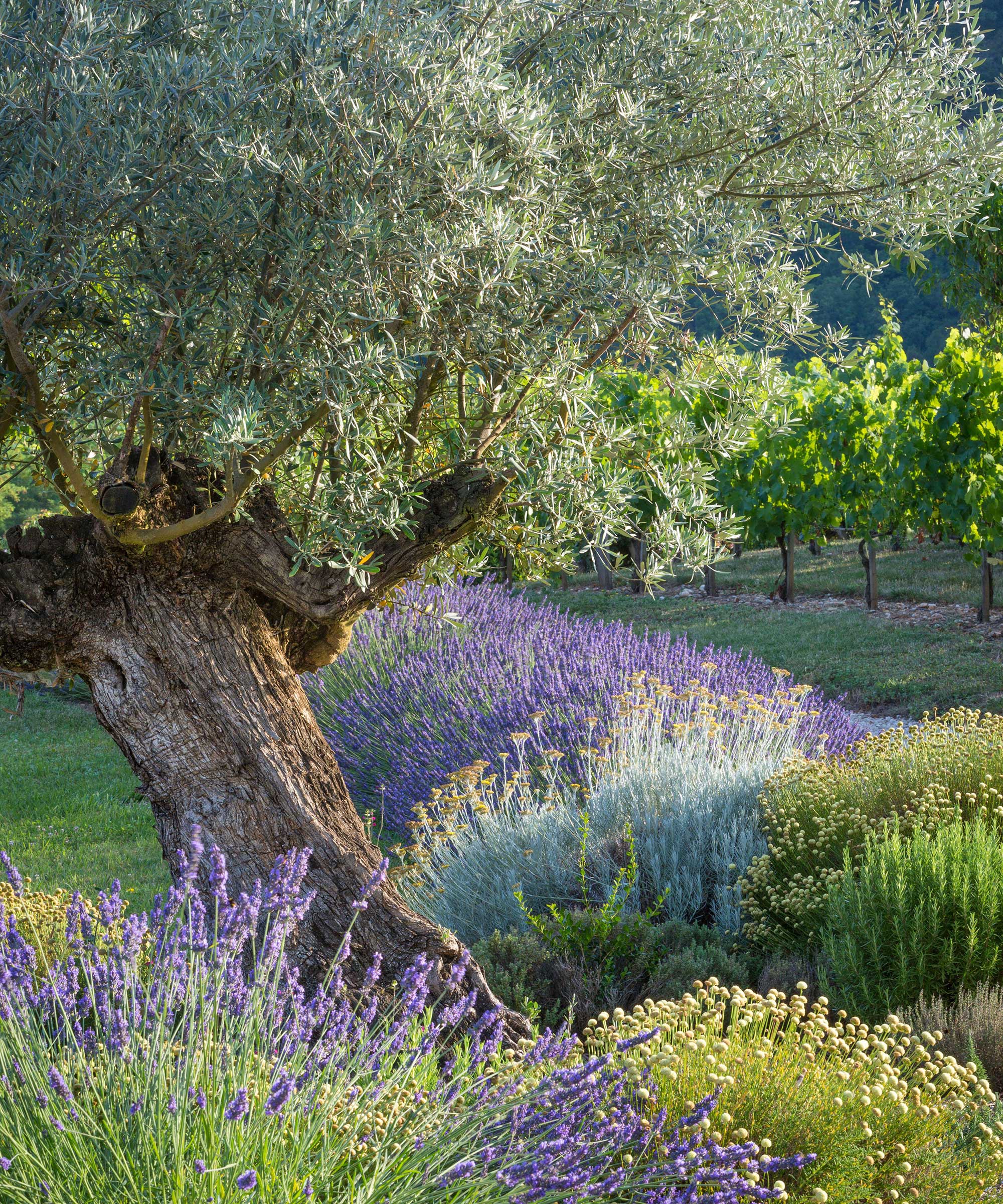
Larger olive trees look beautiful amongst Mediterranean-style borders filled with lavender and other drought-tolerant plants
What are the benefits of pruning olive trees?
As is the case when pruning shrubs and other plants, giving olive trees an annual cut has many benefits.
First, there's the aesthetic value: it helps to create a neater, more visually-pleasing, wine-glass-shaped structure. And then there's the boost it can give to the trees' health.
Pruning out dead or diseased wood will enable it to grow stronger. For instance, some olive trees can suffer from fungal infections, such as olive peacock spot, which causes leaves to turn yellow and develop 'eyed' blotches. Cutting off and discarding all the affected growth can help it bounce back to its former glory.
What's more, opening up the structure of the olive tree can prevent it from getting some diseases in the first place, and will enable all areas of the tree to get as much sunlight as possible to grow healthily and produce more fruit.
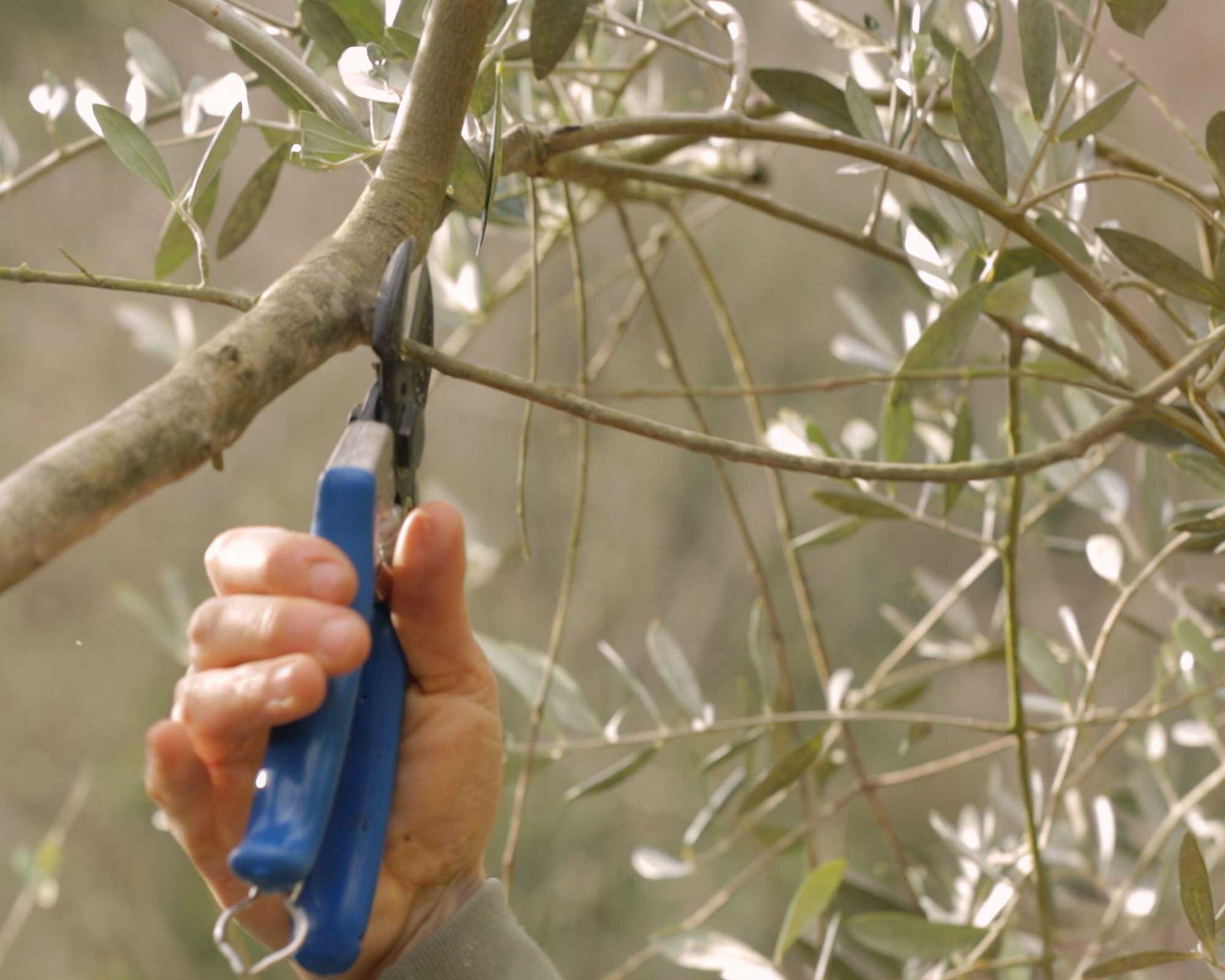
Lightly pruning olive trees is beneficial for their health as well as their aesthetic value

The garden was always a big part of Holly's life growing up, as was the surrounding New Forest where she lived. Her appreciation for the great outdoors has only grown since then. She's been an allotment keeper, a professional gardener, and a botanical illustrator – plants are her passion.
